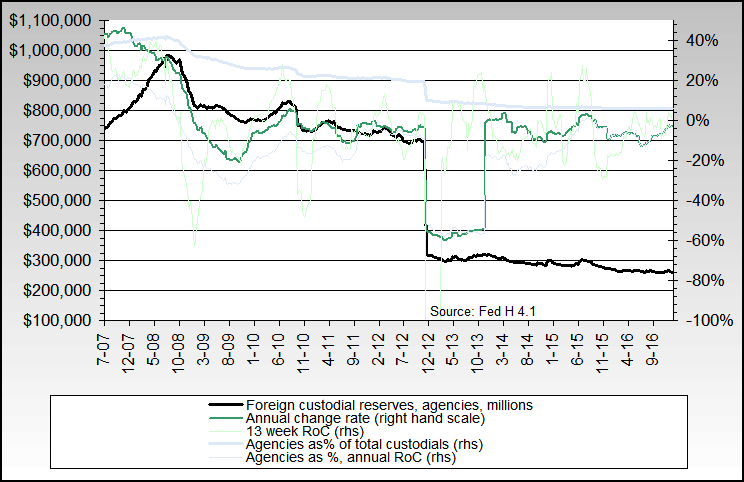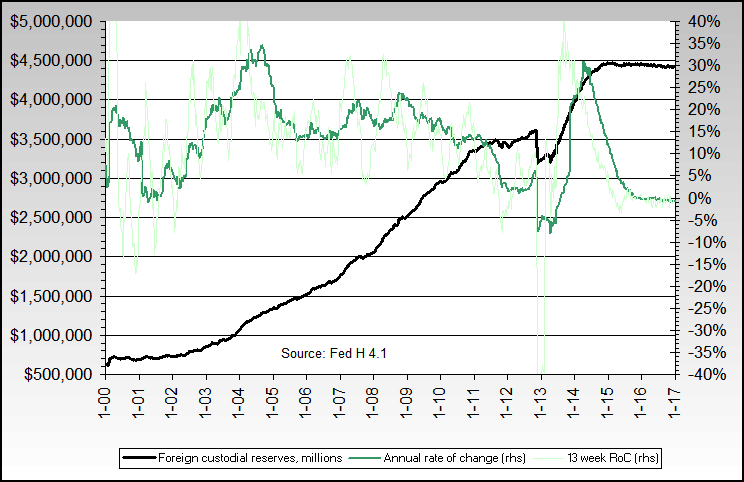 |
by Aaron Krowne
Some of you might have seen my new informational site, the Mortgage Lender Implode-O-Meter. But for those who haven't, I started this site to coherently track a story that is otherwise only quietly developing on a smattering of disparate finance blogs and message boards, with little treatment in the mainstream media (MSM). That story is the collapse of mortgage lending finance, especially in the subprime sector.
I and others had been expecting this for the better part of the last year (many, even longer, but I'm a newer observer). The subprime shakeout is predicated on the deterioration of subprime mortgages and mortgage-backed securities (MBS), which is in turn caused by rising delinquencies, which is in turn caused by the deteriorating financial position of most Americans. So really, it was a no-brainer, except apparently to the brilliant boyz of finance who listen to too many talking heads telling them what they want to hear about the "goldilocks" economy.
Well, I've got news for the goldilocksters: the three bears are home.
The effects of these deteriorating economic fundamentals are now starting to show up in the finance world–which is not the same as, but all too often confused with, the real world:

The chart is a graph of the value of BBB (subprime) mortgage-backed securities dated as of the second half of 2006. I've been following it for months, yet the latest move of just the past couple days still surprised me: it's almost going vertical... downward. Not good.
If you go to MarkIt's ABX credit index home, you can pull up charts for other classes of mortgages (above BBB are A, AA, and AAA), and different date issues, and see how they're doing.
It's a fascinating exercise. You can see that immediately when subprime (BBB) 2006-02 started to crash, there was a "flight to quality" into the As. But as BBB continued to collapse, A began to follow, and then AA, and then even AAA. The effect also began to spread to earlier and later issues; a veritable "shockwave" emanating out from the BBB-2006-02 subprime issues -- ground zero.
I can't quite stress how much this is not good. That's because it gets more complex than just a bunch of holders of mortgage-backed bonds ending up with crappy returns: enter derivatives.
In recent years, derivatives began to be used more heavily, to "buy insurance" on various investments and trades, in case of default or other unexpected moves. Derivatives such as these have skyrocketed to a notational value of somewhere around $400 trillion, by some reports. Why? Because they became so cheap... because nothing financially "bad" had happened in a while. Tremendous quantities of liquidity will do that... until one day exhaustion bursts the bubble. Well, the regular folks down in the "real economy" are seeming quite exhausted.
The tie-in to MBS is as follows: banks and other holders of MBS (like hedge funds) wanted to book their gains immediately ("marking them to market"), so they bought insurance on their MBS in the form of derivatives ("credit default swaps" or "CDS"), and then were able to sell them with a slight markup or use them as "guilt-free" collateral for other speculative plays. Aside from some flogging of these securities to foreigners and the general public (e.g. pension funds), the major financial institutions just sold these things to each other: last I heard, US banks still hold well over 50% of their assets in the form of real estate-related securities.
All this MBS trading and CDS insuring amongst the same pool of entities seems apt to be a setup for a disaster: if MBS returns widely suffer, then someone must pay up on the CDS "insurance". But since retail banks, mortgage banks, investment banks, hedge funds, and private equity have all been both buying selling these things amongst each other, you end up with an undifferentiated soup of liability with no distinct bearers of risk.
And by the way, since derivatives encourage more spending and speculation, they in essence are liquidity (as outlined above), so they essentially beget more of themselves. The credit bubble becomes a self-fulfilling prophecy... for a time.
In sum, the entire financial economy looks vulnerable to a rout here, as the baseline level of default is suddenly becoming much higher. This failure is already cascading through the various grades and vintages of MBS, but as returns fall and CDS obligations must be made good on, there will likely occur a credit crunch that will begin to drive down financial asset prices in general. This will, of course, further harm returns and trigger derivatives obligations, becoming a self-reinforcing, downward-accelerating feedback loop.
The Fed is clearly already trying to stop it, with the accelerated M3 money growth (as was also done in 2000/2001), but it's already too late. The stock market is obediently being inflated, but that does little to distribute wealth to the suffering masses in debt, who are the source of these rising MBS defaults.
New subprime lending is shutting down fast, as reported on the Implode-O-Meter, but not just because of companies going out of business: the risks are now becoming obvious, so financial firms (even large ones, like JP Morgan) are scaling back or eliminating their non-prime lending activities. But this sort of lending, as of late last year, accounted for nearly a quarter of total loan activity. Can anyone guess what is going to happen to the housing market when you forcibly remove at least a quarter of total demand?
I sure hope it all doesn't turn out to be as bad as it looks like it will be.
Guest Commentaries are the opinion of the authors and do not necessarily represent the views of iTulip, Inc., it's owners, affiliates, or advertisers.
__________________________________________________
Special iTulip discounted subscription and pay services flogged here:
For a book that explains iTulip concepts in simple terms americasbubbleeconomy
For a macro-economic and geopolitical View from Europe see Europe LEAP/2020
For macro-economic and geopolitical currency ETF advisory services see Crooks on Currencies
For the safest, lowest cost way to buy and trade gold, see The Bullionvault
To receive the iTulip Newsletter or iTulip Alerts, Join our FREE Email Mailing List
Copyright © iTulip, Inc. 1998 - 2007 All Rights Reserved
All information provided "as is" for informational purposes only, not intended for trading purposes or advice. Nothing appearing on this website should be considered a recommendation to buy or to sell any security or related financial instrument. iTulip, Inc. is not liable for any informational errors, incompleteness, or delays, or for any actions taken in reliance on information contained herein. Full Disclaimer



Comment